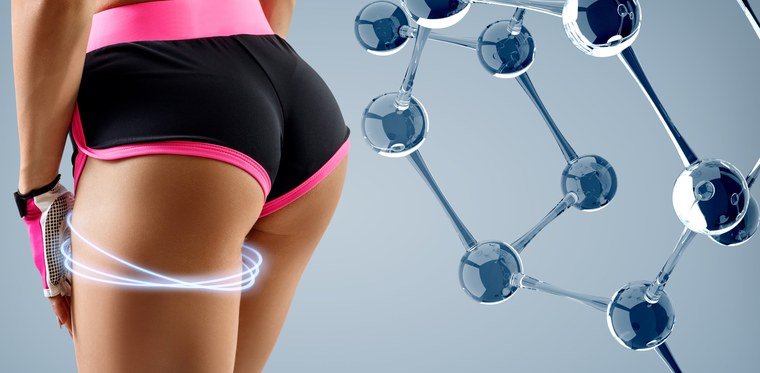
Article title: The Bioavailability of Cannabis through Various Delivery
Username of writer: Glanz
Article keywords: see below
Article body:
How you consume cannabis determines the amounts that your body will receive. Smoking a joint and eating an edible are two different forms of consuming cannabis, and as such, the amount of CBD or THC that you will be taking in will also vary. You can take cannabis in many forms, including:-
- Smoking a bong or blunt
- Consuming cannabis concentrates
- Trans-dermal patches and lotions or creams
However, do you know how much cannabis your body takes when you consume CBD? Will your body utilize all the CBD that you consume? The bio-availability of the CBD consumed usually determines the amount that your body will use.
For instance, someone that takes 100 mg of CBD might end up using only 30% of the entire amount invested. The rest is regarded as a waste, but some metabolites accumulate in the body systems based on your metabolic factors and your frequency of cannabis consumption.
It is not yet clearly known what the accumulation of the remaining CBD does to the body, but so far, there haven't been serious interactions with the drug and adverse effects. However, you need to understand the bio-availability caused by varied methods of consumption which can be used to determine the needs of a patient with greater accuracy.
What Is Bioavailability?
Bioavailability is defined as the rate at which a substance gets absorbed by a living system. This means that whenever a product has a higher rate of bio-availability, you will be able to get more of the substance than a product with a lower rate. Different factors affect bioavailability, such as enzymes in a person and metabolism.
The bio-availability determines how much THC will be effectively absorbed by the body system and how much will be left in the bloodstream after a while.
Some consumption methods have varied bio-availability rates. Knowing this is important if you are looking for a method that will give you the highest amount of THC after consumption.
What is Nano-availability?
This is still new in medical research, but it holds massive potential and promise. With the process, body systems can more effectively absorb medications, which means that targeting specific sites will be much easier and even more effective.
An interesting feature of this research is that it can also be applied to cannabis to enhance bio-availability and the medicinal effects derived from the drug. Some of the companies already actively using the technology include Colo and Boulder. Their edible products are fast-acting and are more readily absorbed into the body systems.
In the smaller form factor, the drugs will easily penetrate bloodstreams, which means that their application in specific areas of the body will be much easier and more controllable. It is also useful for treating pain in areas hard to reach.
Patients getting treatment for inflammation and pain will find nano-availability one of the most effective means of consuming cannabis and getting it into the bloodstream more effectively.
The area of research is still relatively young. Still, it has shown huge promise so far and is expected to provide us better insights into the methods that we can use to get small doses of THC delivered to particular sites in the body that require the treatment.
Bio-availability and Methods of Consumption
The main methods of consumption include:-
- oral
- transdermal
- sublingual
- inhalation
- via suppositories
People have varied preferences based on the delivery method that is most conducive for them. Some users prefer vaporizing and smoking, while others are attracted by options that have a higher absorption rate, such as tinctures placed under the tongue.
The method you use to consume cannabis will determine the bio-availability of the chemical and how much it will take before peaking in your bloodstream.
Other methods are also known to completely bypass the bloodstream and concentrate on the area of application, which means that the effects will always differ based on THC consumption. Let us carefully analyze each delivery method differently and its bio-availability rate with all this in mind.
Inhalation
Smoking a joint and vaping are some of the inhalation methods used in the consumption of THC. In this case, the bio-availability of THC is about 31%. The levels will also vary based on the size of the puffs and how deep the smoke gets into the lungs.
For a joint, one dab will contain .5 to .8 grams of cannabis with around 8% THC. When you smoke a joint, about 20-70% of the THC gets into your lungs, and out of this amount, 30% is bio-available after getting into the bloodstream.
This THC will then peak within 3 to 10 minutes in your bloodstream, but after 3 hours, you will no longer have any THC bio-available.
Using a bong to consume cannabis is known to remove higher tar levels. However, one study revealed that it effectively gets rid of THC, which is usually contained within the tar. However, it is not effective when it comes to removing gas-phase intoxicants from the smoke.
The method used to inhale cannabis determines the amount of THC that your body gets. Vaporizing cannabis is a method that delivers a higher amount of cannabis into the lungs, which means that you have more bio-available THC when you use this method of consuming cannabis.
When vaporizing is used for the ingestion of cannabis, there is a 1:10 ratio of cannabinoids to tar which is much better than the 1:27 ratio for smoking cigarettes and consuming cannabis out of pipes.
Sublingual
Using sublingual methods to consume cannabis is similar to inhalation in terms of bio-availability since both methods use the same kind of membranes to absorb the THC into the bloodstream.
Sublingual consumption of cannabis has a faster onset, and the concentration levels that can be reached using this method far exceed those possible when you use edible cannabis. Bio-availability for this method is between 92-98%.
The mucous membranes in the mouth are responsible for the THC's absorption when consumed using this method, and some of it is also digested. The use of cannabis using this method is important for patients looking to alleviate overactive bladder symptoms, spasticity, and neuropathy.
However, the greater bio-availability rates mean that this method of consumption is more effective and has a longer-lasting effect compared to the other methods of intake for THC. Patients with multiple sclerosis have been using this method of THC consumption to get faster relief.
Since this method provides a higher rate of bio-availability, it enables them to treat the symptoms a lot better. The effect can be felt almost immediately, making this method reliable for most patients dealing with pain and inflammation.
Oral
For this method of cannabis consumption, the bio-availability rates usually lie between 4 and 20%, and the THC concentrations are known to peak within 2-4 hours of the initial ingestion of the THC cookie.
There are many reasons why this method has such low bio-availability rates. One of them is the variable absorption of the drug and its degradation when it gets to the stomach.
While the digestive system is still processing it, the chemicals and acids acting on it reduce its effectiveness. With other inactive metabolites in the liver, the absorption rate of the drug is greatly reduced.
The cannabis is also changed in its form when it undergoes first-pass metabolism, and as such, the bio-availability is known to decrease greatly. The new form of THC is also known to provide a more intense high feeling, which is why many people feel intensely high when they have eaten a weed cookie.
Regardless of the lower bio-availability of edible cannabis products, they are known to last much longer than other modes of consumption. The effect also varies depending on the person, and a dose that works for someone else might be too small or large for you.
As they pass through the digestive system, the THC will last much longer in the body, which means that its results will be more evident, and the effects will linger long after.
The only downside to using this method of consumption is the effect of the digestive system on the concentration of THC, and after a while, the true effect of the THC is greatly reduced. The consumer also feels the rush of intoxication for a shorter time, but it is known to be more intense in this case.
Suppositories
There are various THC and CBD suppositories in the market, and you might probably be wondering what their use is. According to research, rectal administration is a promising avenue for people that suffer from severe nausea, speech disorders, and even the elderly.
It is one of the methods that is known to provide the patient with local pain relief instead of the other consumption methods where the THC has to first go into the blood. There is no rectal bio-availability known for the THC used in this form. In some research studies on cancer patients, the bio-availability was twice as likely with taking the THC orally.
The absorption rate of consuming cannabis in this form is also much quicker since it has a lower first-pass metabolism. This is important since it means that whenever THC is consumed in this way, there is more of the medication that is bio-available for the body to use.
The suppositories also made moving easier and helped with rigidity and spasticity. The THC levels were about 70-80% bio-available, and as such, it was two times greater than the THC capsules that had been orally ingested in the same study. In some research studies conducted, the THC was synthetic like Marinol.
As such, the true effect and actual bio-availability of using this method of consumption were harder to establish. However, it was evident that the bio-availability of using a suppository was two and a times higher than when the patient ingested a THC capsule orally.
Topical and Transdermal
These are the products used to relieve inflammation and pain transcutaneously or via the skin. The products are easily repelled by water, and as such, they can be transported more easily through the skin.
There is a slower rate of release when cannabis is consumed in this way, and the methods of application usually avoid a first-pass metabolism effect. This means that they make it possible to administer does that last for a longer length of time compared to other delivery methods or consumption.
However, they are only absorbed into the body at the application site, and getting systemically absorbed is not as effective as most people would expect.
When you apply cannabis to the skin, it is less likely that you will feel its psychoactive effects. However, there is still a need for more research into the actual bio-availability of cannabis products that are topically applied. These products include:-
- Creams
- Ointments
- Herbal poultices
- Transdermal patches
Transdermal patches are also seen as one of the best methods of reducing negative side effects of cannabis use which is evident when smoked.
It is also believed that these patches can improve the effectiveness of the patch applied to the skin, and the users have also been known to experience longer-lasting pain relief when they use transdermal patches.
The method is also more convenient and does not take much concentration when absorbed. This is why many people prefer patches instead of smoking joints, as it is convenient and easily hidden and will not bother anyone around the user.
Overview
THC is consumed in different methods, which depends on what someone intends to achieve and what mode of ingestion they are more comfortable with.
Some people prefer consuming it out of a bong, while others are more used to munching on weed cookies whenever they need the THC in their bloodstream. The method used for the consumption of THC determines the bio-availability rate.
This means the percentage of THC effectively absorbed into the bloodstream and how long it will take before disappearing from the body systems. With the comparison of consumption methods listed above, you now understand bio-availability and how it varies from one more ingestion to another.



.png)